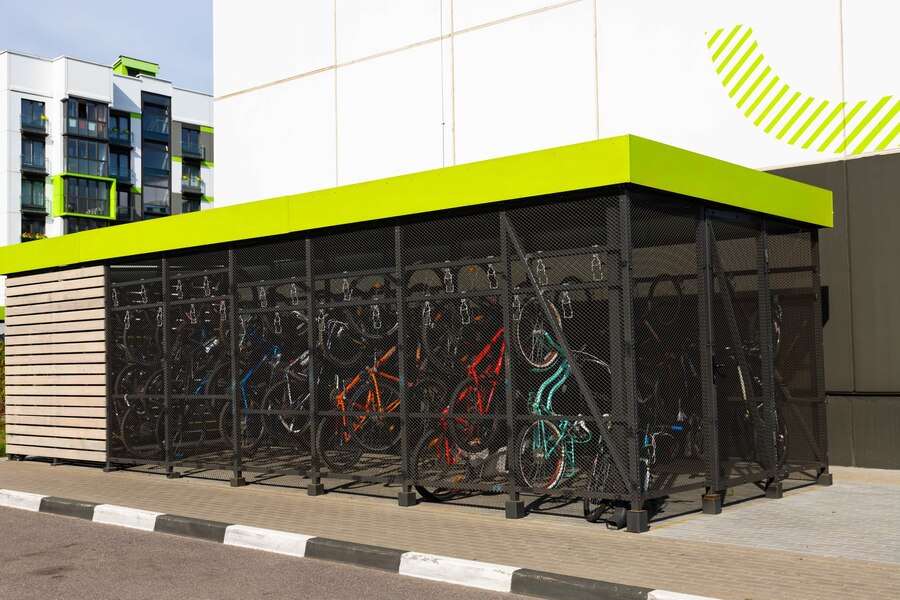Cycling has experienced a surge in popularity as people become more health conscious and environmentally aware. With this rise in bicycle usage, it’s crucial to provide adequate infrastructure to support and encourage this eco-friendly mode of transportation. One essential element in any cyclist-friendly environment is a well-designed cycle shelter. In this blog, we’ll explore the significance of bike shelters and delve into the key considerations for designing the perfect one, where form meets function.
Understanding the Importance of Cycle Shelters
Before delving into the design aspects, it’s essential to grasp why cycle shelters are critical. Cyclists need safe and secure places to park their bikes, especially when they visit public spaces, offices, schools, or transit stations. An efficient cycle shelter not only protects bicycles from adverse weather conditions and theft but also encourages people to choose cycling as their preferred mode of transportation.
Location: Where Accessibility Meets Visibility
The first consideration in designing the perfect cycle shelter is its location. It should be easily accessible to cyclists while ensuring high visibility to deter potential thieves. Placing shelters near entrances and exits of buildings or transportation hubs is a strategic move to attract more users and increase overall bicycle usage.
Capacity and Scalability
The ideal cycle shelter should cater to the current demand and account for potential future growth. Designers should analyse cycling patterns and estimate the number of bicycles the shelter needs to accommodate at peak times. Incorporating scalable features can help expand the shelter’s capacity without requiring significant alterations in the future.
Weather-Resistant Materials
To fulfil the function aspect of the shelter, materials must be carefully chosen. Weather-resistant materials, such as galvanized steel, aluminium, or durable plastics, should be used to ensure the shelter stands the test of time and provides optimal protection from rain, snow, and harsh sunlight.
Aesthetics: Blending with the Surroundings
While functionality is vital, the form should not be overlooked. A cycle shelter should be aesthetically pleasing and seamlessly blend with its surroundings. Harmonizing the shelter’s design with the architecture and landscape of the location enhances its appeal and encourages more people to utilize it.
Adequate Ventilation and Lighting
Proper ventilation is often overlooked in cycle shelter design, but it’s essential for preventing condensation and maintaining a fresh environment for bicycles. Additionally, incorporating ample lighting inside the shelter enhances safety and security during evening hours, giving cyclists peace of mind.
Security Features: Encouraging Confidence
Security features play a significant role in designing the perfect cycle shelter. Installing bike racks that allow cyclists to lock both the frame and wheels of their bicycles is crucial in deterring theft. Moreover, surveillance cameras or nearby lighting can add an extra layer of security and boost confidence among users.
User-Friendly Design
A cycle shelter should cater to users of all ages and abilities. Implementing a user-friendly design with easy-to-use bike racks, clear signage, and unobstructed pathways ensures a seamless experience for cyclists.
Sustainability and Green Initiatives
In the modern world, sustainable design practices are gaining momentum. A cycle shelter can contribute to green initiatives by incorporating eco-friendly materials, incorporating rainwater harvesting systems, or even integrating solar panels to power lighting and surveillance cameras.
Designing the perfect cycle shelter requires a delicate balance between form and function. By understanding the importance of cycle shelters and considering factors like location, capacity, materials, aesthetics, ventilation, lighting, security features, user-friendliness, and sustainability, we can create shelters that not only meet cyclists’ needs but also enhance the overall urban landscape. A well-designed cycle shelter sends a powerful message of support for sustainable transportation, encouraging more people to embrace cycling and contributing to a greener, healthier future for our communities.


